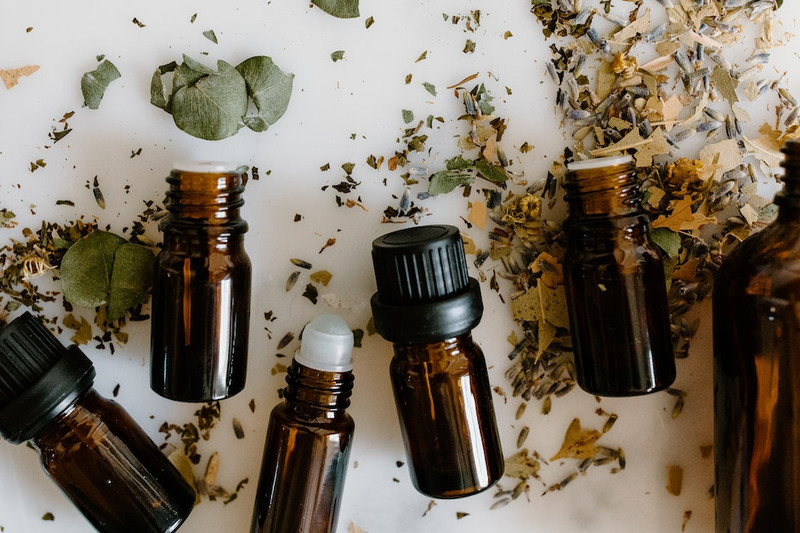Reviewed By: Kacie La
Keen to learn more about the world of essential oils? Want to create your own essential oil blends but not sure where to start? Well, you've come to the right place.
N-Essentials has all the ingredients (and expertise) you need to develop the best-smelling essential oil blends to add to your skin, hair, and household products.
What Are Essential Oils?
Essential oils are highly concentrated extracts by distilling the leaves, flowers, and other parts of a plant. This process captures the plant's natural fragrance and flavour, as well as its beneficial properties.
They have a wide variety of uses, from being used in your home diffuser to making natural cleaning products. Some common essential oils include lavender, lemon, and peppermint. Each essential oil has its own unique benefits and uses. For example, lavender oil is often used to contribute to an ambient room atmosphere, while many people find lemon oil to be refreshing.
Essential oils can be used in diffusers, added to bathwater, or diluted with a carrier oil to create skincare products — the possibilities are endless!
Recommended Essential Oils Products
N-Essentials stocks a comprehensive collection of essential oil products for wholesale and personal use.
Some of our most popular products include:
Lavender essential oil
A well-known and extremely versatile essential oil, lavender has a distinct floral aroma and can be added to moisturising products or used in a diffuser.
Frankincense essential oil
If you're searching for an oil with a fruity, spicy, or woody aroma, frankincense may be the choice for you. Distilled from the resinous sap of the frankincense tree, which is commonly found in South Africa, Oman, India, and Yemen, frankincense is a popular choice for aromatherapy products.
Rosemary essential oil
Sometimes you want an essential oil with a lighter, milder touch — like rosemary. This essential oil is very reminiscent of eucalyptus. It's regularly added to cosmetic and skin care products and offers a range of appearance-based benefits.
Peppermint essential oil
Few scents are quite as distinctive as peppermint. Extracted from the leaves of the Mentha Piperita plant, peppermint oil is refreshing, invigorating, and often added to both cosmetic and aromatherapy products.
Rules For Creating Essential Oil Blends
One of the most creative ways to use essential oils is to blend them to create unique and personalised scents. The possibilities are endless and dictated only by your imagination.
However, there are a few fundamental rules that you should keep in mind when mixing essential oils to ensure you're satisfied with the final product.
The first thing to know about creating essential oil blends is that there are three key 'notes' in a scent — the top note, the middle note, and the bottom note.
Top note
The top note is the first scent you notice in a blend. It is instantly recognisable, tends to be quite sharp, and is relatively short-lived. Peppermint and lemongrass are typical examples of top-note scents.
Middle note
The middle note of a blend creates the body of the scent. Middle notes tend to be exceptionally soft and warm — think nutmeg or rosemary.
Bottom note
As the name suggests, the bottom note is the portion of the blend that lingers. Base notes are typically heavy, long-lasting, and relatively expensive. Frankincense and patchouli are excellent examples of bottom-note scents.
The process of blending essential oils presents an opportunity to really let your creativity shine. Here are some general guidelines to follow, which will help you develop a unique and personalised scent:
- Depending on the type of skincare, cosmetic, or aromatherapy product you are planning to use your essential oil in, you will likely need to include a carrier oil. A carrier oil acts as the foundation of any oil mixture, providing critical diluting properties. Sweet almond oil, grapeseed oil, and jojoba oil are all popular carrier oils available to purchase at N-Essentials.
- Consider, broadly, your favourite type of scent. Do you enjoy herbal aromas? If so, eucalyptus, basil, or rosemary may be a good choice. Perhaps you prefer earthy, woody flavours, like ginger or pine. Citrus is always a good choice, and lemon and sweet orange are two of our favourite scents. Of course, if you're looking for a lighter touch, you may want to consider a floral scent, such as lavender or neroli. The possibilities are endless!
- Once you've decided on your preferred category of fragrance, consider how you might combine them. Would a woody flavour go well with citrus? Probably! The great thing about blending essential oils is the opportunity it offers to test and extend your creativity. Of course, there are plenty of resources on our blog, including essential oil blend recipes, which will help you learn more about scents.
- Be sure to store your essential oils in a cool, dark place, away from direct sunlight. Otherwise, you risk encouraging the process of oxidation, which can reduce the oil's strength and benefits.
Shop For Essential Oils At N-Essentials
Whatever your preferred essential oils blend, N-Essentials has the ingredients you need. Our range of essential oils, carrier oils, and fragrance oils is comprehensive and will allow you to create natural skincare, cosmetic, and household products to help you live a healthy life.
For further information about blending essential oils, contact our friendly and knowledgeable team today.







